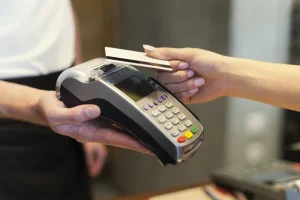Reassigned Numbers Database FAQ
Over the past several years, companies that rely on calls and text messages to communicate with prospects and customers have had to manage the risk of contacting someone on their cell phone when there is a chance the person who provided the number is no longer the owner of it. This has resulted in companies having to adjust their dialing practices or having to use third-party data services to determine whether the number has been reassigned to another consumer. Finally, there is some relief in sight with the release of the Reassigned Number Database (RND).
CompliancePoint has received a multitude of questions from our clients about the new RND, so we have put together this list of Frequently Asked Questions (FAQ) to assist you with any questions you or your organization may have.
Why does the RND exist?
Under the TRACED Act, Congress required the Federal Communications Commission (FCC) to develop a system by which callers can ensure they comply with the Telephone Consumer Protection Act (TCPA) consent requirements. There has long been a good source of permanently disconnected landlines, but no source to track permanently disconnected wireless and Voice Over IP (VOIP) lines, until now.
Cell phone and VOIP carriers were required to begin tracking permanently disconnected numbers starting 07/27/2020. Companies that subscribe to the RND may check their calling and texting lists against the database prior to initiating the outbound communication to ensure no calls or texts are made to a consumer’s phone number without the appropriate consent.
Do I have to use the RND?
No. If you choose not to use it, ultimately, you will be in the same situation you were in prior to the inception of the RND. You are certainly free to continue to perform business as usual and assume the same level of risk that you have been. The major advantage of using the RND is that if you query a number and the RND identifies it as NOT being permanently disconnected since you gained consent, you can seek Safe Harbor under the law in case of an error of the RND.
When did the RND go into effect?
A free Beta period is running from July 1, 2021 until September 30, 2021. As of now, the plan is to shut it down during October while they get customers signed up on subscriptions and then reopen it live on November 1, 2021.
How do I sign up for the Beta?
You can visit the website Reassigned.us or send an email to support@reassigned.us and request information on how to sign up.
Is the Safe Harbor in effect during the Beta period?
Yes, even during the Beta period, if you query the database using a valid consent date and get a “No” response and there is an error, you can seek Safe Harbor under the law.
Is there just one type of account?
No, there are two types of accounts:
- Callers – a Caller is a designated user type that will use the RND directly and query numbers that it wishes to call or text lawfully.
- Caller Agents – a third-party contractor that Callers can contract with to query the database on their behalf.
Is it a list that I’m going to download periodically?
No. The RND is unlike other wireless and DNC lists that you may have been used to downloading. The RND is a database that must be queried.
What information is needed to query the RND?
There are only two pieces of information needed — a telephone number and the date that you received consent to call the number.
What if my consent date is prior to 07/27/2020, when carriers were required to begin tracking permanently disconnected numbers?
If you’ve spoken to the consumer on the telephone number since 07/27/2020, you can use that date.
What if I haven’t spoken to the customer since the consent date, and that date is prior to 07/27/2020?
You could use a mobile scoring service to gauge the likelihood that the number still belongs to the same consumer. If you utilize mobile scoring, you could use the date of the mobile scoring. NOTE: It is unlikely you could seek Safe Harbor in this mobile scoring scenario, but the risk should be greatly reduced.
When I check a telephone number and a date, what are the likely responses I will get?
You will receive one of three responses for each queried number:
- “Yes” – the number has been permanently disconnected since the date provided;
- “No” – the number has NOT been permanently disconnected since the date provided (Safe Harbor applies here); and
- “No Data” – there are two reasons you may receive this response:
- Smaller providers (those with less than 100K subscribers are not required to provide their permanently disconnected numbers to the RND until 10/15/2021; or
- The consent date you provided is prior to 07/27/2020
If a consumer ports their number from AT&T to Verizon, will AT&T report that number as permanently disconnected?
No. A number is only considered permanently disconnected when a subscriber permanently relinquishes the number or a carrier permanently reverses assignment of the number.
How often do I have to check the status of permanently disconnected numbers?
You should check the status every 45 days at a minimum. The FCC’s RND Order requires carriers to wait 45 days between permanent disconnection and reassignment. Therefore, if you check a number today and the RND indicates that it has not been permanently disconnected, there should be no need to check the number again for 45 days.
How much is it going to cost?
The cost related to the RND has not yet been released.
CompliancePoint does know that it will be tiered, subscription-based pricing and the per-query price will be discounted for higher volume subscriptions. Each tier will have a flat-rate charge.
Will the database tell me if a number has been “reassigned”?
No. The naming of the RND is somewhat misleading. It tracks “permanently disconnected” numbers, not whether the number has been reassigned. Regardless of reassignment, if a number has been disconnected since the date of consent, you should not call the number.
Will the RND maintain records of the numbers that I query?
No. The RND Administrator has said that they will not maintain records of your activity. Therefore it is up to you to keep records of the numbers that you checked and the disconnect status of those numbers when you checked them. Remember, if you don’t maintain records, it is like it never happened!
If you have additional questions around the RND or other questions related to telemarketing compliance, do not hesitate to reach out to us at connect@compliancepoint.com.
Finding a credible expert with the appropriate background, expertise, and credentials can be difficult. CompliancePoint is here to help.





